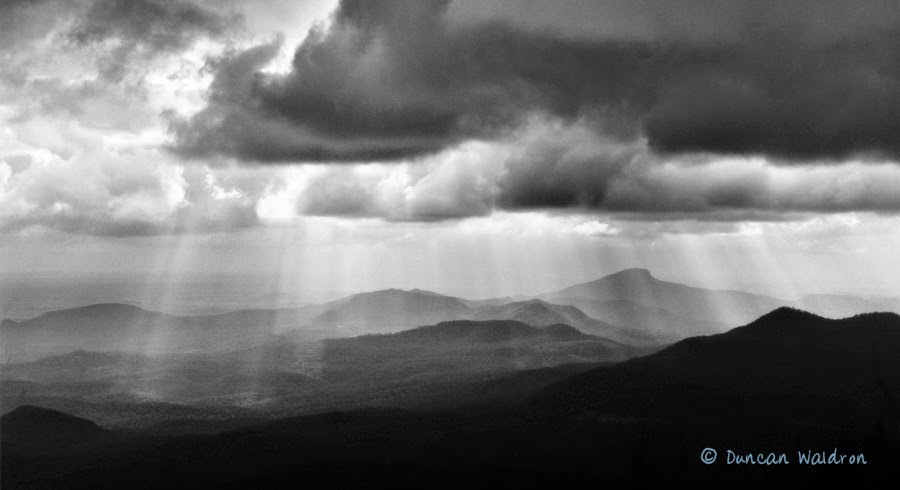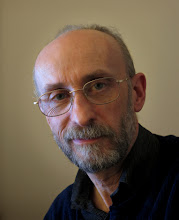When we lived in Edinburgh, one of our favourite pastimes was to go for a drive through East Lothian. We'd just pick a road and head down it; with plenty to choose from, we'd have a different journey each time. East Lothian is a coastal county, bounded to the north by that well-known Scottish linguistic joke, the Firth of Forth. It is a green place, containing both coal-mining towns and pastoral land—and even the odd site of historical importance (a hoard of Roman silver was found on Traprain Law in 1919).
Having moved to the New South Wales north coast 16 years ago, we found the opportunities for similar explorations a little more limited, although we did have a few favourite roads through the Coffs coast hinterland. Four years ago, the move to Brisbane's southern suburbs reduced the opportunities even further, although we have taken the occasional meandering route home through some of the older suburbs, to enjoy a glimpse of the city's older residential architecture.
More recently, we have been nursing a notion that moving inland to a large country town might be a good idea. Although there is no mandatory retirement age in the Brisbane City Council, I start drawing my UK Civil Service pension in less than five years, with the old age pension 5-10 years beyond that (depending upon how far those particular goalposts are moved by government policy).With that notion in mind, we finally took a trip to Toowoomba, having said many times that we should.
My introduction to Australia (apart from the few days in Sydney after arrival), was two years spent in the small country town of Coonabarabran, the local centre for staff working at the UK Schmidt Telescope, to which I had been assigned for a while. Coming from the cultural sophistication—not to mention the ancient roots—of a city of 300,000 people, I felt as if I'd arrived in the Wild West. The strange shop awnings, some unsealed roads, and huge cars that you could play 5-a-side football upon, were a world away from the Georgian architecture and horizon-to-horizon asphalt of Scotland's capital. However, I took to it pretty quickly: the change was refreshing, and I grew to like living among just 3,000 people, in a simpler, more honest way of life. In a way, this place seemed to have a lot in common with the in-your-face bluntness of Glasgow, than the behind-closed-doors cliqueish attitudes of Edinburgh. And, because Heather had grown up in such places, whenever we travelled thereafter, we would compare places to Coona', which seemed like the 'real Australia'.
It is partly with that feeling in mind that we feel drawn to smaller town life, although I would also welcome a move to the drier side of the Great Dividing Range, where tools don't go rusty and camera lenses (among other things) don't do mouldy, like they do in a humid coastal environment.
In between our first planning to see Toowoomba, and our actually going there, Heather had gained a friend just an hour further west. The visit was therefore to kill the proverbial two birds. We could have done with another day or two, but it had to be something of a flying visit—which just means we have an excuse to do it again later on.
So, what's important in our choice of town? I've said for some time that I could pretty much live anywhere, that home can be where I hang my hat. Coming to Brisbane has been enjoyable, although that might not have been the case had we not managed to find a home in the suburb that we settled upon. Here, there is easy access into and out of Brisbane, on relatively uncongested roads, and the public transport is good; my journey to work is a fairly trivial run of less than 20 minutes, and the suburb itself is good. Retiring to a country town though, there will be no drive to work, and the way out of town will be pretty straightforward anyway.
We have few vices, but one that we do have is the pleasure of seeking out a cafe that makes a good coffee. There is plenty of average coffee around, but I can make that at home, if I'm being sloppy. Joining the Brisbane Coffee Lovers Meetup group introduced us to a few places, and we have found more ourselves. So, we would hope that anywhere else that we settle has at least one place we can repair to, for a well-made cup. After a terribly long drive from home (OK, about 90 minutes), we therefore stepped into the first likely place that we saw, to slake our coffee-flavoured thirst. Sadly, it was quite average. Not bad, but not great. After that, we went walkabout, to see what the town centre had to offer, stopping to buy some things for lunch on the way, which we later scoffed in the botanic gardens. Good, there is at least one excellent deli in town.
The day soon went, as we meandered about both on foot and by car. We had agreed to be at our friends' place for 6, so leaving around 5 was the plan, but we had need of another coffee, after a hard day swanning around†. We spotted a place that looked like it was trying to be a Melbourne lane cafe, and after a quick butchers inside, decided that it seemed authentic enough. Sadly, the coffee wasn't to my palate, so another one was crossed off the mental list.
After our night in Dalby (where the sky was dark and the stars bright), generally chewing the fat evening and morn, we headed back east around midday. This late on Anzac day, the ceremonial parades had finished, and we found Toowoomba to be mostly closed. After another walk around town, we had a delicious lunch at the Biriyani Hut, followed by ice cream and sorbet at the corner cafe, followed by … wait for it … a gorgeous coffee. We'd found it at last, and know where to go next time. The iced delicacies were very good as well, so no complaints there at all. Mission accomplished.
The drive home took us back across flat pastoral land, with cotton, sorghum and who-knows-what-else? Coupled with a blue sky scattered with meteorological cotton-wool above the agricultural kind, a few photos were called for. I dare say I'll be back for more.
† Do swans 'people around', when they're on a long lead?


















